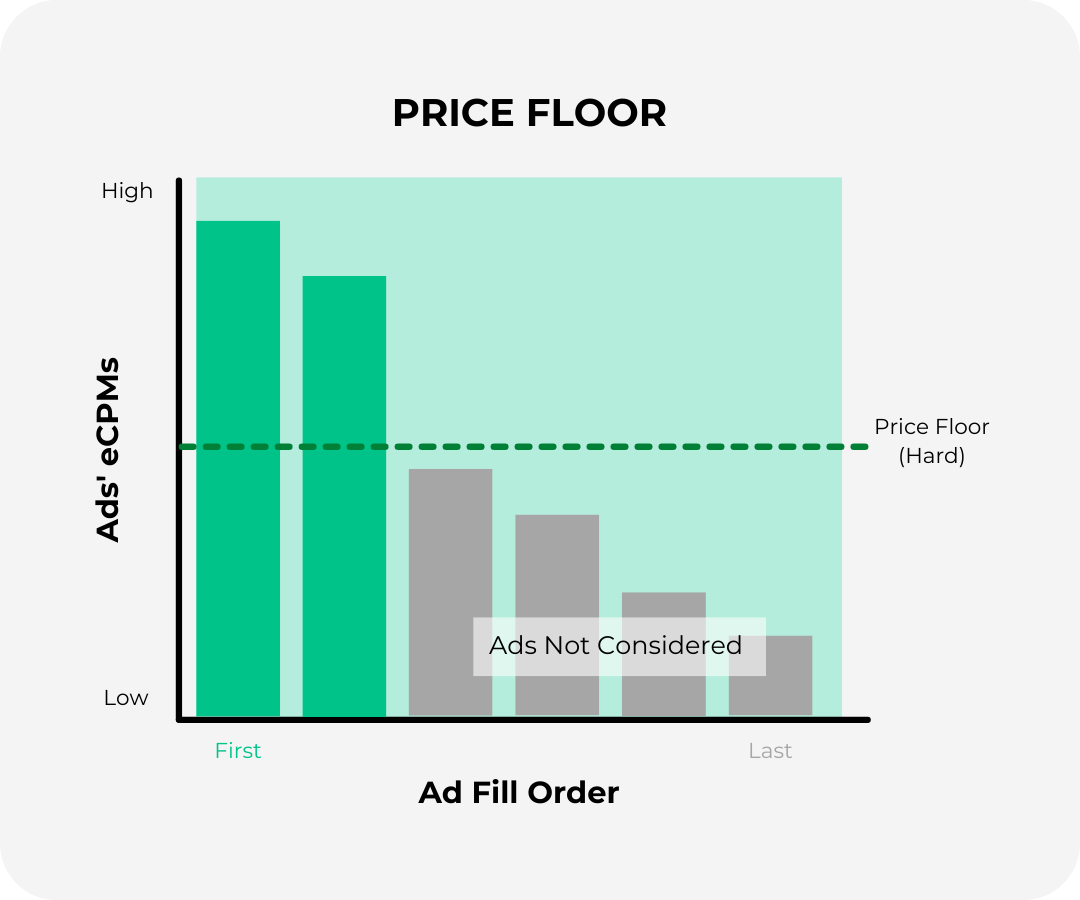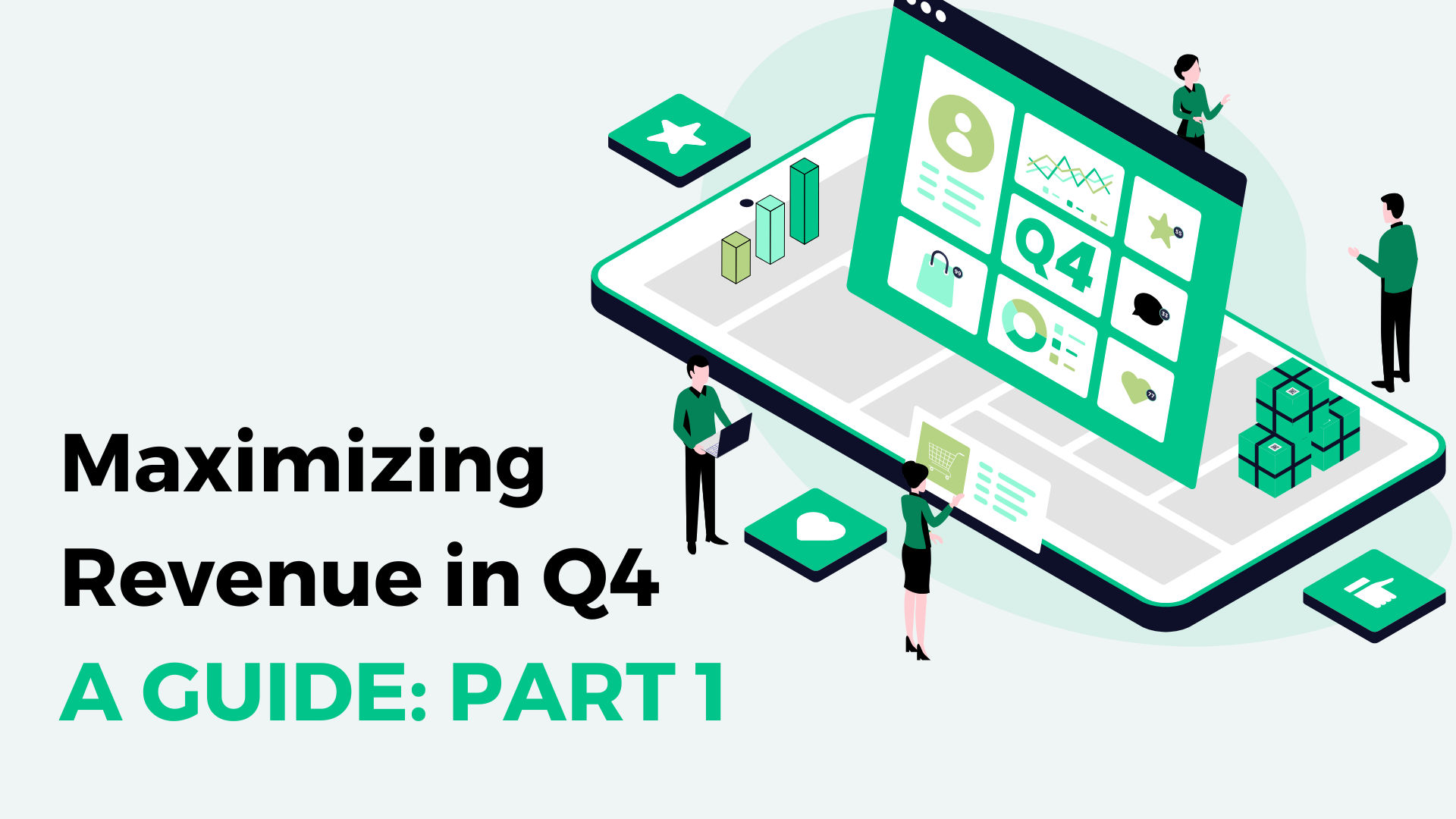In programmatic advertising, setting a price floor is a common practice to ensure that ad inventory is sold at a fair price and to maximize revenue for publishers. But how do price floors work, and what are the benefits of using them?
In this blog, we’ll explore everything you need to know about price floors. From maximizing revenue to improving the overall ad experience for users, price floors are an essential tool in the world of programmatic advertising.
What is a price floor?
Price floor refers to the minimum price set for an ad impression. This means that the advertiser is required to bid at least the specified minimum amount in order to win the impression. Price floors are commonly used in programmatic advertising, where a real-time bidding system is used to determine which ad will be displayed to a particular user.
Creating price floors and a pricing strategy allows publishers a level of control over their inventory. Price floors can be set by the publisher within the adserver or the ad exchange, and they are often used to ensure that the value of the ad inventory is maintained.
Because they are highly configurable, price floors can be set utilizing various targeting criteria to maximize their impact. For example, a publisher might set a higher price floor for a premium, highly-viewable ad placement or for ads targeting a specific demographic core to their business. Similarly, an ad exchange might set a higher price floor for a particular geographic location or time of day.
How do price floors work?
In ad tech, standard price floors work by setting a minimum price, or in some scenarios a ‘target price’, for each ad impression. When an ad exchange receives a bid for an impression, it compares the bid to the price floor set for that impression. If the bid is higher than the price floor, the exchange will sell the impression to the highest bidder. If the bid is below the price floor, the exchange will not sell the impression, and the advertiser will need to increase their bid to meet the minimum price.

Dynamic price floors adjust in real-time based on supply and demand for a given impression. For instance, during peak hours, when there is high competition for ad inventory, the price floor might be raised to ensure that the publisher is receiving fair value for their inventory. Effectively, dynamic floors can function utilizing the same or similar targeting criteria as standard floors, but have the added capability of incorporating real-time, automated pricing logic for every ad opportunity.
What are the benefits of setting a price floor?
There are several benefits of setting a price floor, including:
- Maximizing revenue: Price floors help publishers to set a minimum price for their ad inventory, which ensures that they receive fair value for their content. By setting a price floor, publishers can prevent their inventory from being sold at a price lower than the minimum they are willing to accept.
- Quality assurance: Price floors provide a measure of quality assurance for publishers. It’s no secret the ad industry has experienced a “fraud” problem – however, publishers can reduce potential exposure to ad fraud by enabling price floors. Typically bad ads, malware, bots, etc. exploit lower-priced publisher inventory in order to profit off of their exploits. Implementing price floors can make the economics less desirable for fraudsters and bad actors.
- Efficient auction: Price floors can help to create a more efficient auction system by reducing the number of low-quality bids that do not meet the minimum price set for the inventory. This helps to reduce wasted resources and ensures that advertisers are only bidding on impressions that are likely to generate a return.
- Highly Configurable: Price floors can be configured based on various factors, such as the ad unit, advertisers, geography, key-value, URL, and browser, just to name a few. This means that publishers can strategically apply price floors for very specific slices of inventory to maximize yield.
- Real-time optimization: Dynamic price floors can adjust in real-time based on a number of signals for any given impression. Using AI and machine learning provides an increased level of flexibility and optimization aimed at further increasing yield.
Price floors are an important tool for publishers and ad exchanges to ensure that the value of their ad inventory is maintained and that advertisers are bidding at a fair price for each impression.
If you’re interested in learning what Freestar can do for you, you can get started today by completing this form. Check out our blog on our dynamic flooring technology to learn more about how we maximize revenue for our publishers.




